On August 2 the release wave 2 features for early access became available. I am super excited to discuss some of these new features in this article. Please note that most updates will only affect the Unified Interface, most of them will not affect the classic interface.
In this article I will be discussing the following topics:
- Timeline Enhancements
- Knowledge Authoring Templates
- Inline Image Editing for KB Articles
- Knowledge Search Updates
- Quick Create Form: Save & Create New
- View Inline Images while reading email
- Header Enhancements
Timeline Enhancements
The records in the timeline are now more compressed in the view so users can see more records in the same amount of space. The title, date and description fields will be displayed in the view, and the icon for the activity type has been moved to the right side. When hovering over the right side of an activity, the commands available for that activity become visible. A single click on an activity will expand it if possible, clicking the same activity again will collapse it.
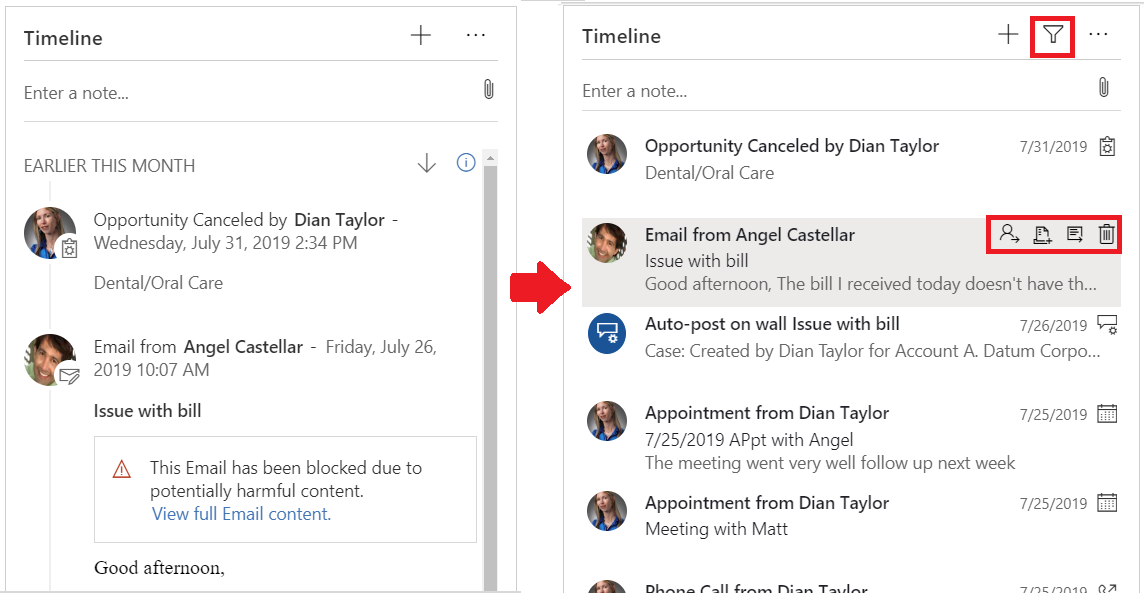
The filtering capabilities for the time line have been simplified as well. User will be able to select multiple filter options simultaneously. In order to access the filtering capabilities, click the filter icon on the top right side of the timeline pane. Users have the ability to filter by record type, activity type, activity status, activity due date and modified date. When expanding each of the ‘filter by’ options, a list with checkboxes appears allowing user to quickly filter the underlying records.
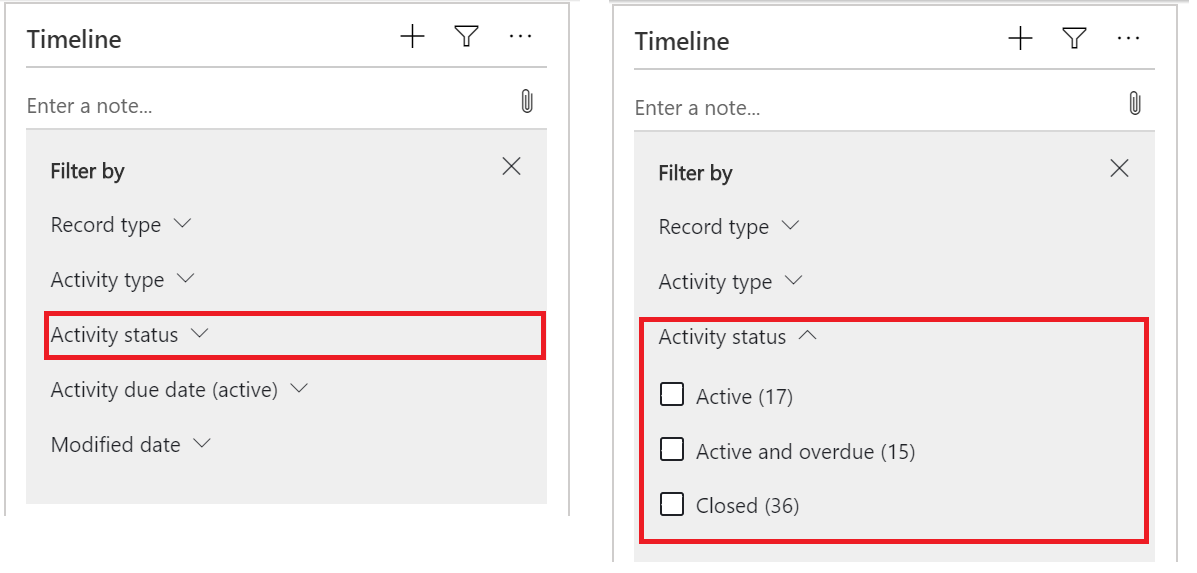
When opening personal options in Dynamics 365 and navigating to the email tab, I noticed users now have the option to show emails as conversation on the timeline in the unified interface.
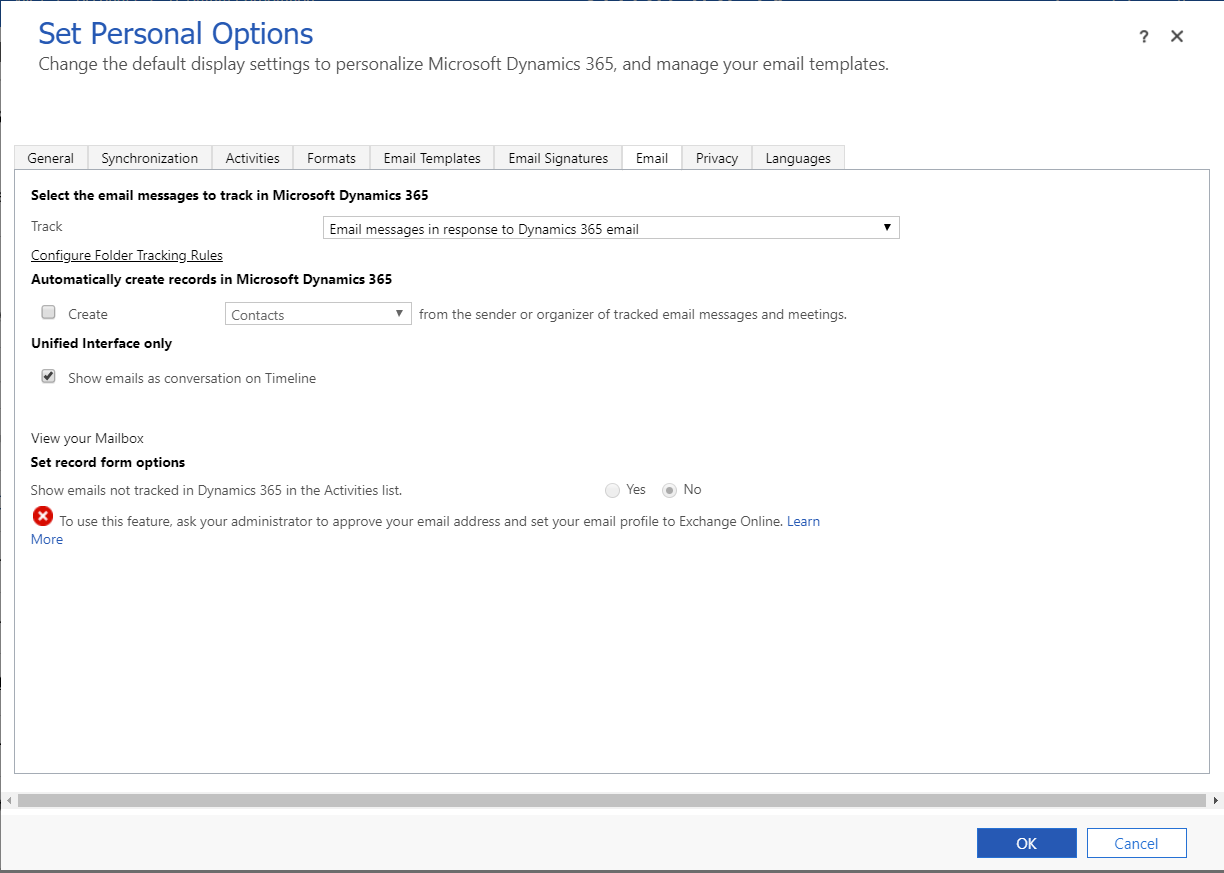
Knowledge Authoring Templates
Dynamics 365 will now be shipped with several out of the box knowledge templates, which allows users to quickly create an article by using a template. Users will be able to add their own templates, edit or even delete the existing templates. Keep in mind that knowledge article templates are a different entity than knowledge base articles. Knowledge article templates don’t need to be published before then can be used to create a new kb article. As soon as the kb template is saved, it’s available to authors.
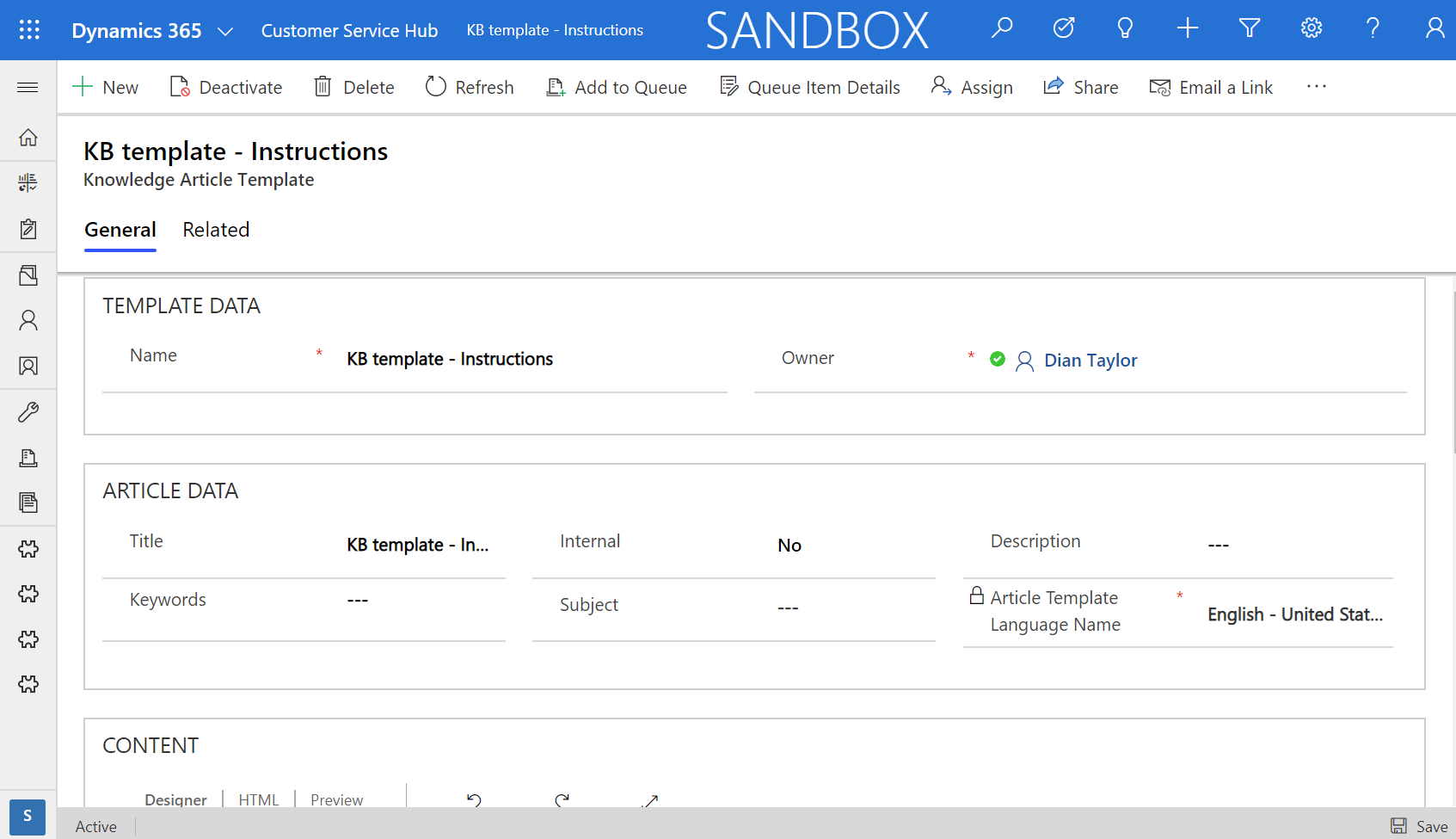
Inline Image Editing for KB Articles
This feature makes it a lot easier for users to edit knowledge bases articles. They will be able to copy and paste, drag and drop and resizing images directly from within the kb article, very similar to what users can do today in Microsoft Word. Users will also be able to upload images from the file explorer vs having to save the image somewhere else and point to the image URL in order to show it in the article. Unfortunately this feature is not available for early access so I wasn’t able to play around with it.
Knowledge Search
The search capabilities for KB articles from within a form is a lot cleaner. There is more room on the form to show more articles and users are able to hide the filters by clicking on the filter icon, giving them more screen real estate. Users have the ability to filter KB articles by status, visibility (internal, external or all), date and language.
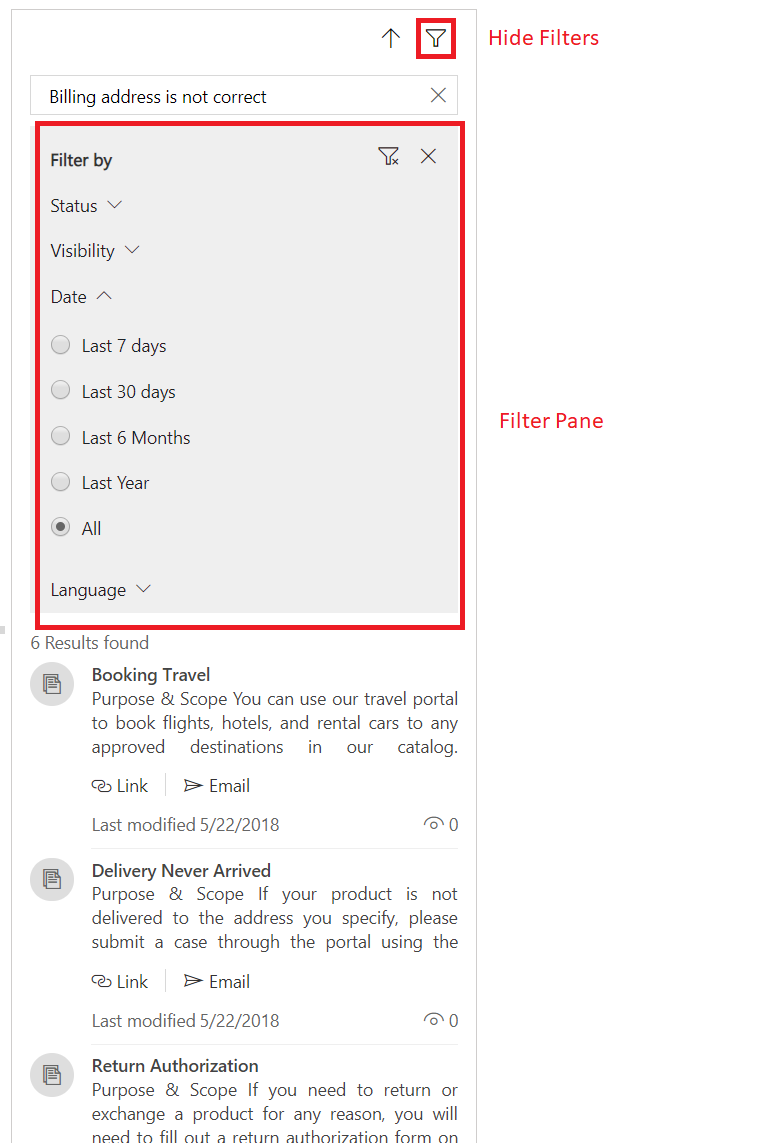
Quick Create Form: Save & Create New
Users now have the ability to save and create a new record from within a quick create form. Previously users only had the option to save and close a record created by using quick create forms. If they wanted to create another record, they would have to click the +button again to add another record. When a record is created using the quick create form, users can click on the down arrow icon next to the ‘Save and Close’ button which will then display the Save & Create new option.
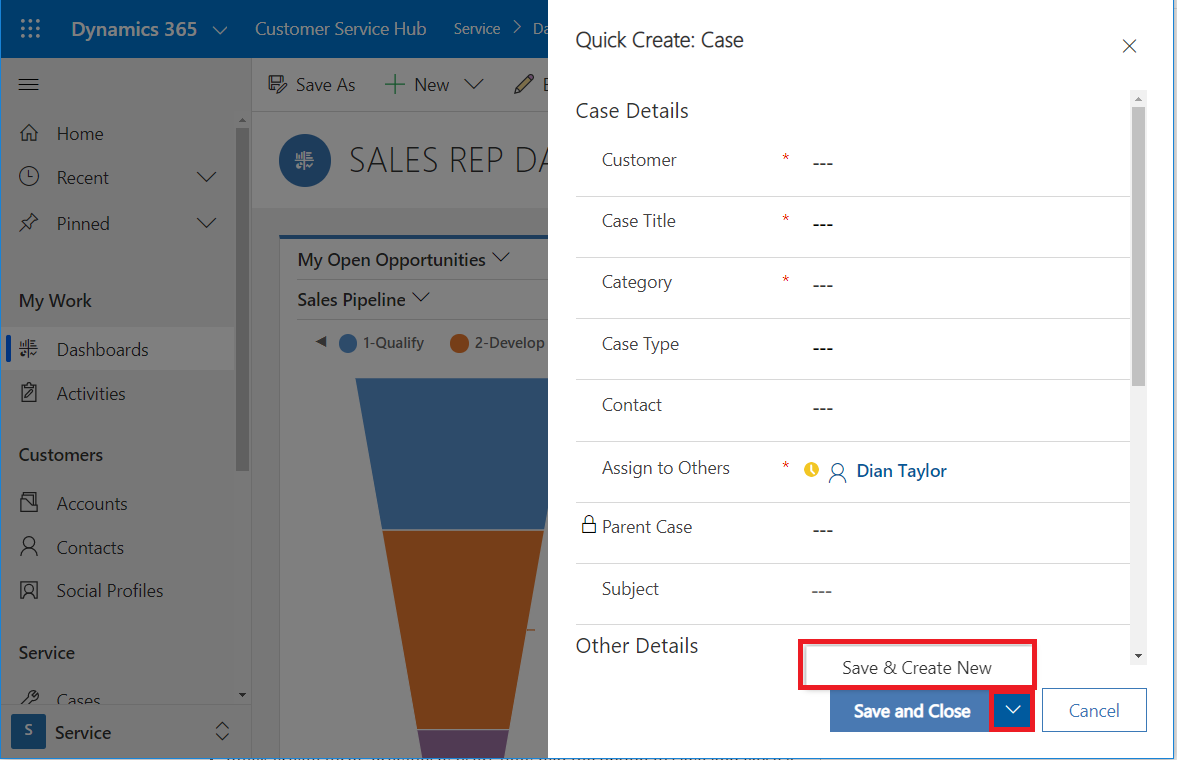
View Inline Images while reading email
In earlier versions images in emails were only available as attachments. If users wanted to view the images, they would have to open the attachment(s). With this feature users are able to view the images inline while reading emails in Dynamics 365, just like they would if they would read the email in outlook.
Form Header Enhancements
There are some new options available for form headers in the fall release. Admins now have the choice between the following configurations for form headers:
- High-Density with read only fields
- High-Density with fly out
- Low-Density
With high density headers users will always be able to see up to four fields in the header and the record title will not be truncated. If the title is long, then this data will be displayed using multiple lines. Users will not be able to update data in the 4 header fields. Admins have the option to use a fly out which will be visible when users click on the chevron on the header. Admins can configure the fields in the fly out so they can be edited. All header fields will be displayed in the fly out.
The form selector has also been moved and is now located under the record title.
Low density headers will only show fields that are not displayed in the header, but users will be able to update the data in the fields (unless the field is configured as ‘read only’. The fly out is automatically shown based on the width of the form and the number of fields in the header. Administrators can’t configure when a flyout is visible when using low density headers.
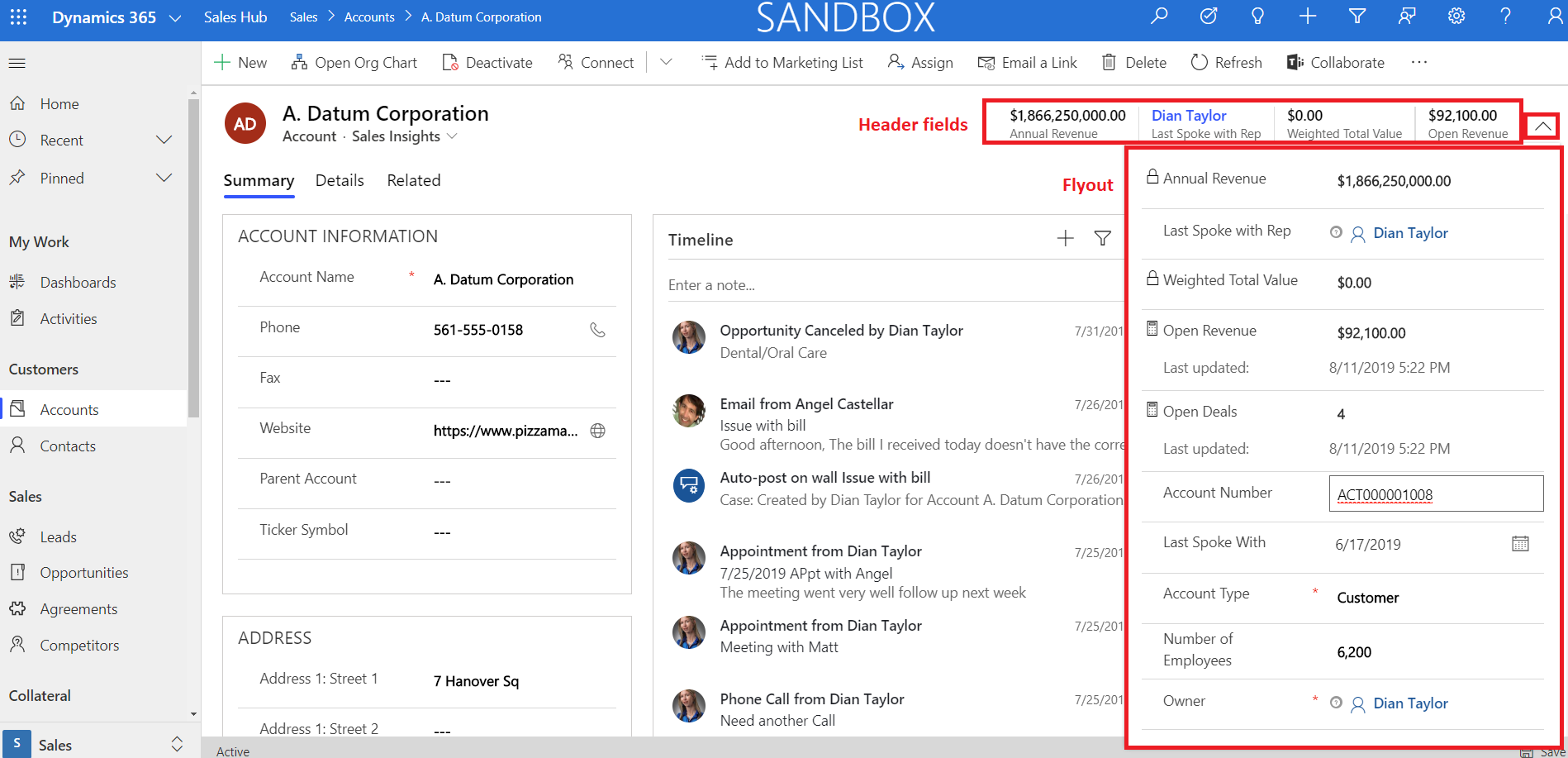
Configuration
The configuration of these new header features will need to be done from the new form designer. Navigate to https://make.powerapps.com, under ‘Data’ select entities and the entity you want to configure, and open the form. Click the ‘Edit header density’ on top of the form, or click on the header. The header options will show on the left: ‘High density’ and/or ‘Show header fly out’.
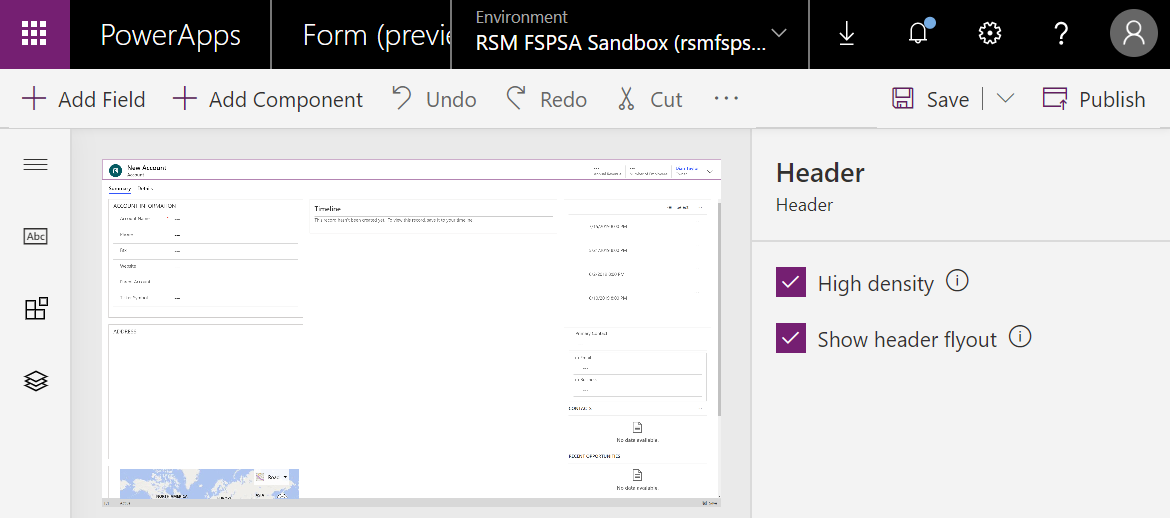
When clicking on the individual fields in the header we have several options available, such as hiding the label, making it a read only field, locking the field, hiding the field or hide the field on phone.
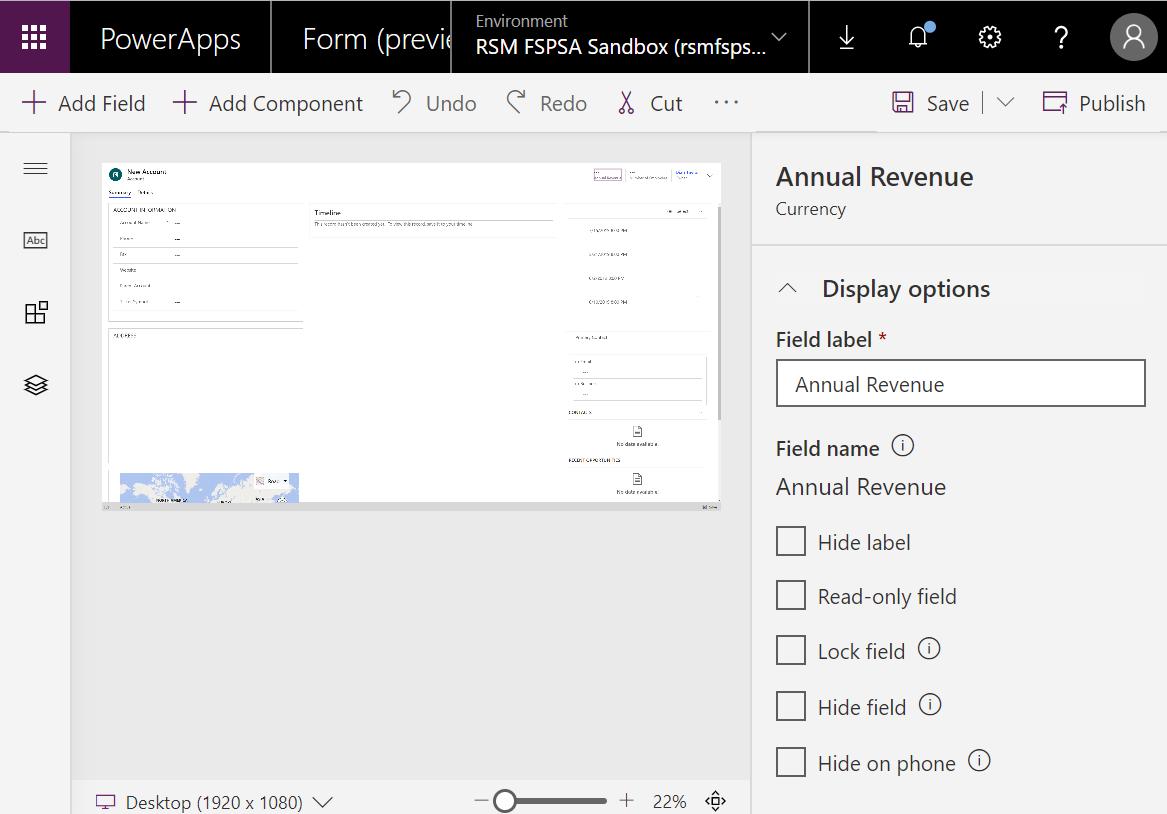
This concludes my series of articles on the Dynamics 365 – Release Wave 2. Check out the video below to see some of the new functionality in action!

 RSMUS.com
RSMUS.com